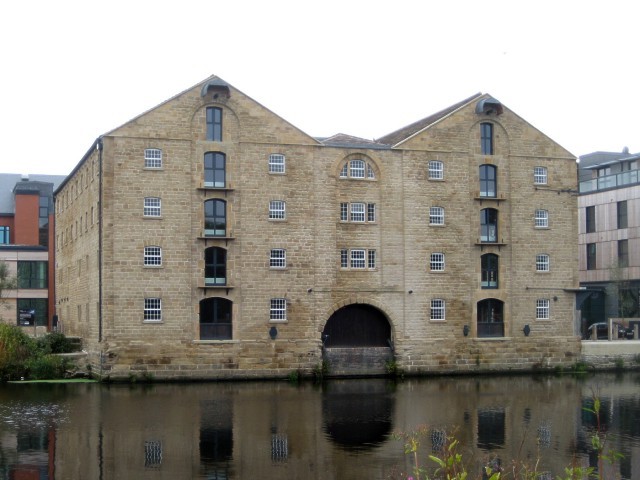Copley was a built as a model villageType of mostly self-contained community, built from the late 18th century onwards by landowners and industrialists to house their workers. by Colonel Edward AkroydIndustrialist, politician and philanthropist. between the River Calder and the Calder and Hebble Navigation
Constructed between 1758 and 1834, the navigation makes the River Calder navigable between Sowerby Bridge and Wakefield in the West Riding of Yorkshire. to the south of Halifax in the West Riding of Yorkshire, England. Akroyd bought a disused mill on the banks of the River Calder in 1844, demolished it and built a larger mill that was completed in 1847.[1]
To house his workforce Akroyd built a “model industrial settlement” of 112 back-to-backForm of terraced houses in the United Kingdom, each sharing party walls on three of their four sides. houses in three terraces, with shops at the end. The first houses, described by Pevsner as built in a “picturesque Pennine Vernacular” style, were completed in 1849. They have two bedrooms and had “privies” in the front gardens. Rents proved to be high, and the next two terraces were built more cheaply. Another row of through houses, one room deep, was built in 1865 after the back-to-backs were criticised in an article in The Builder.[1]
To attract and retain a workforce outside the urban area of Halifax, Akroyd provided not only houses but a school, library and reading room, a co-operative store, the parish church, a recreation ground and cricket club, and promoted the savings bank, burial and clothing clubs, allotment gardens and the horticultural and floral society.[2]
The school was built in 1849, and a year later a library. Akroyd also paid for much of the cost of St Stephen’s Church, which was built between 1861 and 1865 on the opposite side of the river, to the designs of W. H. Crossland.[1]

